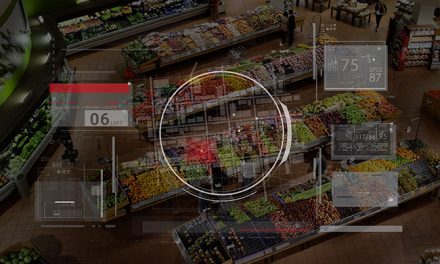Drone Team in West Cumbria, UK Offer Advanced Technology for Hazardous Environment Monitoring
A PIONEERING drone team in West Cumbria are at the forefront of future technology which will change the way hazardous environments are monitored across the UK.
Amanda Smith, Sellafield’s UAV Equipment Programme Lead, and Adrian Johnson, UAV Equipment Engineer, were asked as end users to take part in a national competition for remote monitoring of sensitive sites fully funded by the NDA (Nuclear Decommissioning Authority) and delivered by DASA (Defence and Security Accelerator).
Amanda and Adrian, based at Sellafield’s Engineering Centre of Excellence at Cleator Moor, are helping shape the next phase of UAV technology by giving an end user perspective on what will be of most benefit to decommissioning sites across the UK.
The expert drone duo were asked to give their input at a recent demonstration event for one of the projects funded by the NDA competition at Milton Keynes due to their innovative use of UAVs at Sellafield and throughout the NDA estate.
The demonstration displayed cutting edge UAV technology, the project involving designing capability from scratch to enable drones to land on surfaces of any orientation based on a novel thrust-vectoring and suction-attachment technology, and then use an arm to deploy tools to carry out tasks.
Amanda said: “This technology will revolutionise the use of drones in hazardous environments as it will transform them from being a monitoring tool to being used to actually do the job as well.
“These drones have multiple arms – and can be fitted with whatever tools you want to complete a task – it’s a bit like a Swiss Army knife approach.
“It’s a very impressive and exciting development for the use of UAVs. It’s technology we could be seeing used at Sellafield and throughout the NDA estate within the next two years.
“We are pleased to be recognised for our work at Sellafield and across the NDA estate to the extent that our end user advice is valued on projects and technology such as this, which is important for the future monitoring of sensitive sites across the UK.
“Our next step is to work with the company involved to share our expertise on what are the potential use cases on site and across the NDA estate. It’s an opportunity for the company to tailor the technology to suit our needs.
“It’s a smart way of working because it means that businesses who are developing solutions which will be important for a range of industries avoid spending all their time, effort, and money on developing technology only for the end user to say: ‘it would have been so much better if you only you had done this’.
“It gets that thinking and expertise from the end user into the process at the outset which is a much more time-efficient and cost-efficient way of working and of developing new technologies.
“It’s also fascinating speaking to the owners of these small tech companies, who are at the cutting edge of developing these products and discussing what technologies they are developing and seeing what possible uses they might have.
“It gives us an insight into what is up and coming and makes sure that at Sellafield and the whole of the NDA estate we are at the forefront of these developments.
“There are so many situations you might not immediately think about where this technology can be most effective.
“We heard how this technology had been used in a range of defence and security applications, including the clean-up in the aftermath of the Salisbury poisonings.”
Andrew Gray, NDA Innovation Delivery Manager, said: “We are excited to be working with DASA to provide over £700,000 in funding to develop these innovations to help monitor sensitive sites without the physical presence of humans.
“These technologies will help us deliver our mission in different ways, enabling us to move our people away from harm and undertake work which will ultimately accelerate the safe and secure decommissioning of our sites.
“Involving the end user is crucial in all aspects of our competitions, to help frame and drive the technologies into forming the best possible solutions, and we are very grateful to the Sellafield team for their support.”
Ken Wahren of Autonomous Devices said: “This has been a remarkable project, not merely in terms of technical advancement, but also, more importantly, for the way it has established the fit between the technology and the needs of problem owners and end users such as Amanda and Adrian.
“We were blown away by the level of engagement we received, and must take our hats off to Andrew and the entire NDA team for their willingness and ability to look beyond the status quo, and imagine a not-too-distant future where our technology has a positive daily impact across their organisation.
“We also have to acknowledge the important role of the DASA team, who always pushed us to prioritise the needs of the NDA customer, and kept us on our toes technically. We are now extremely excited at the prospect of driving this technology forward to the benefit of the NDA.”




